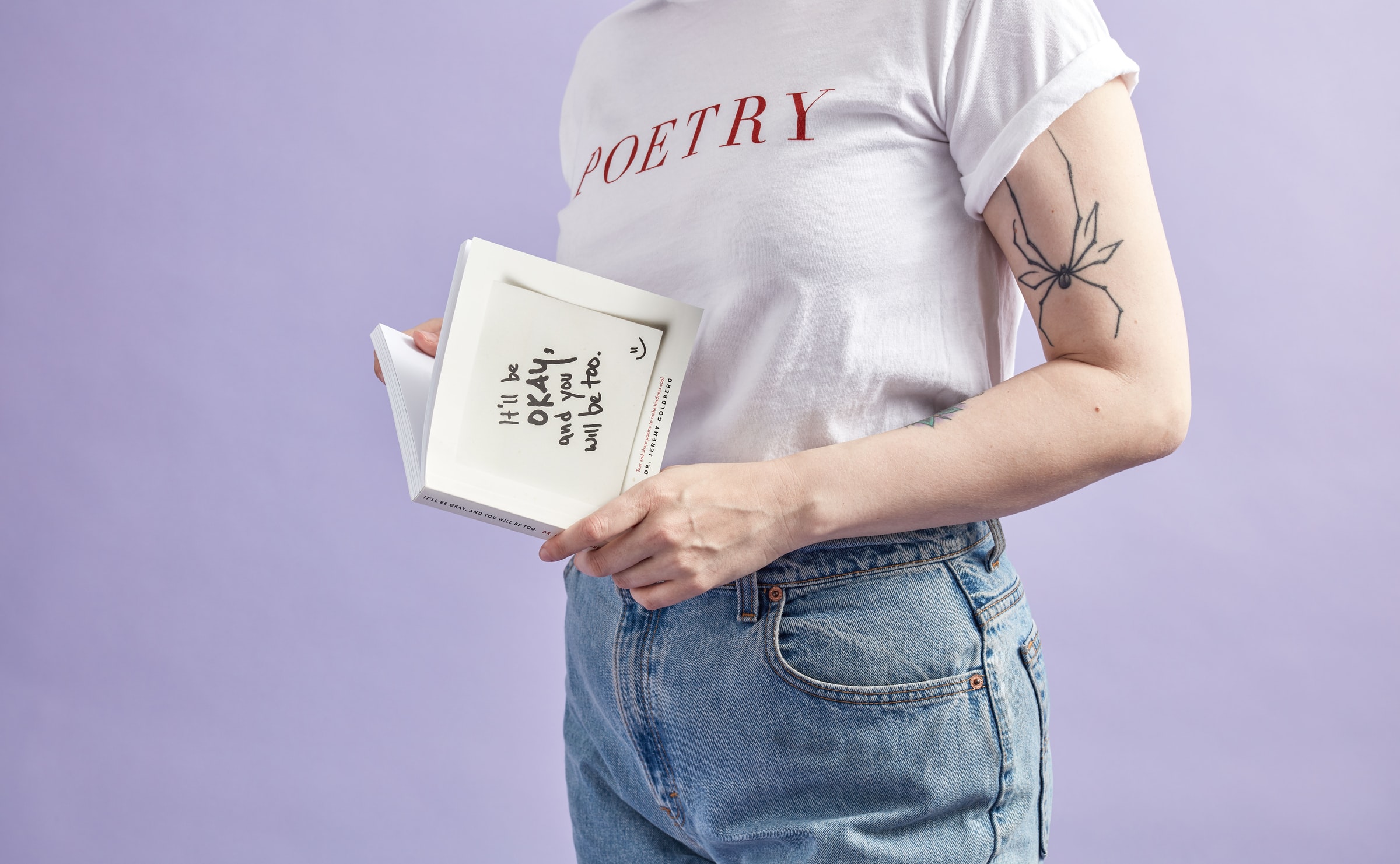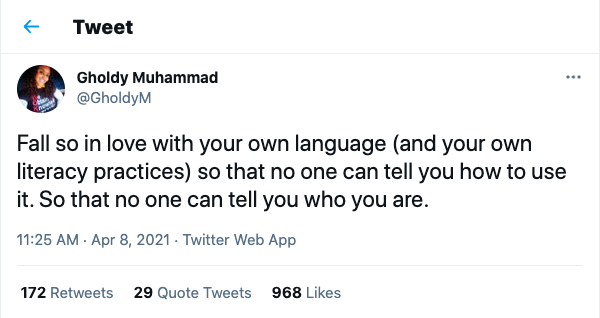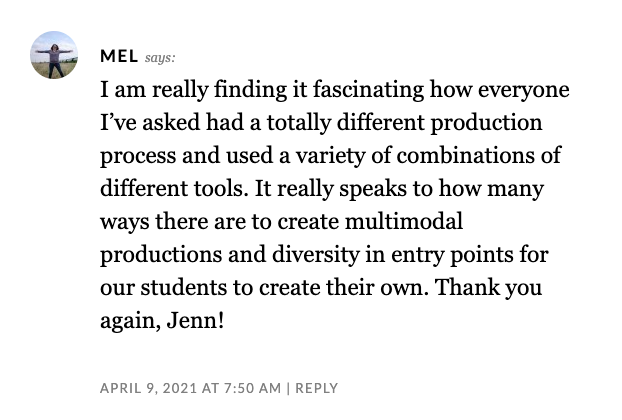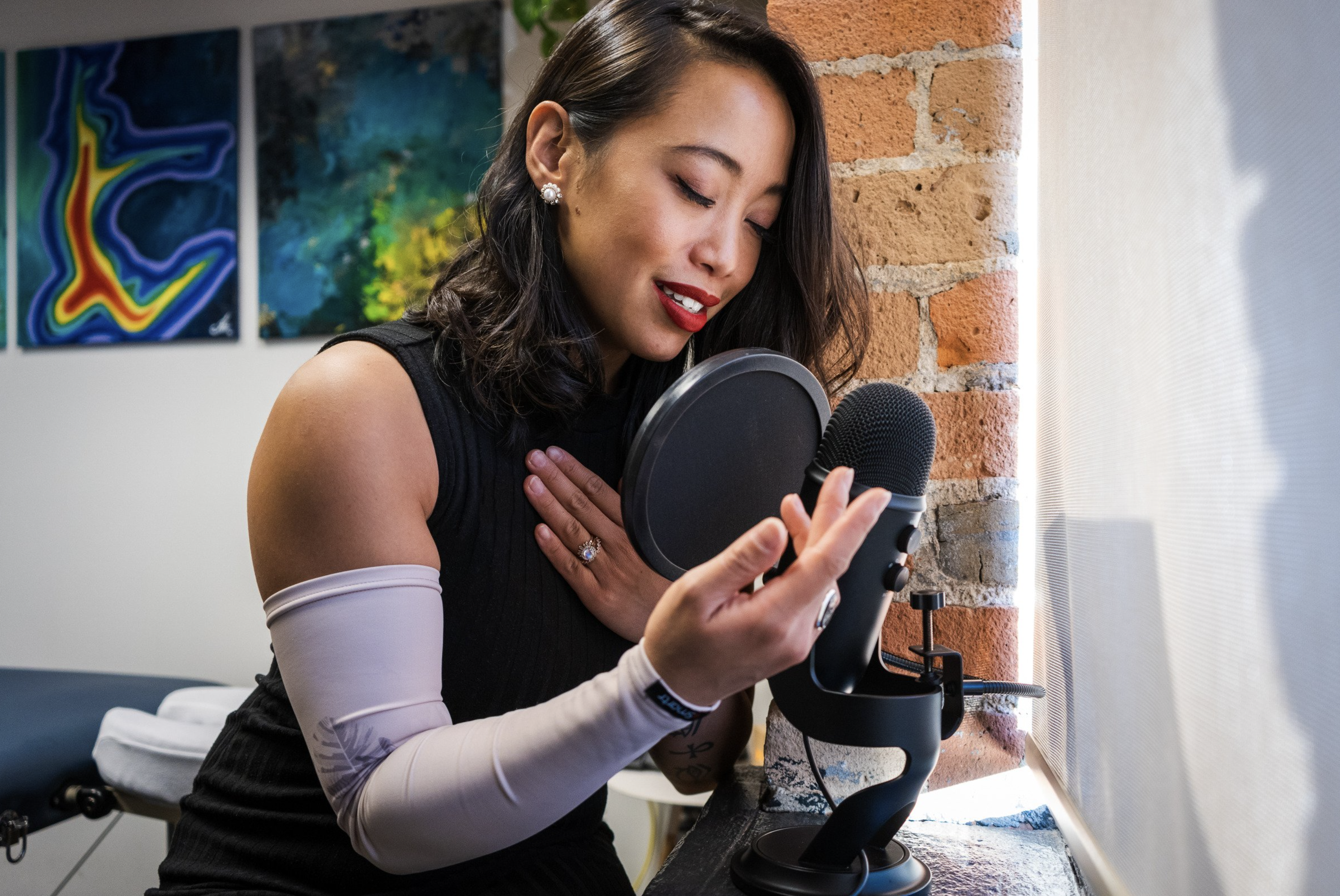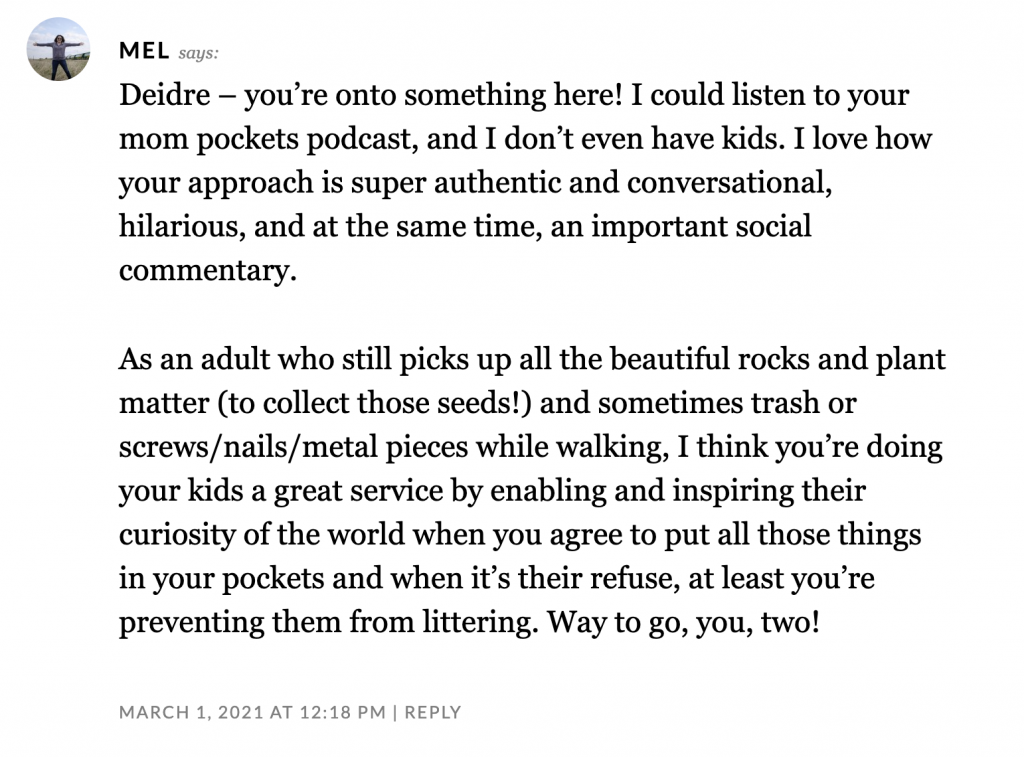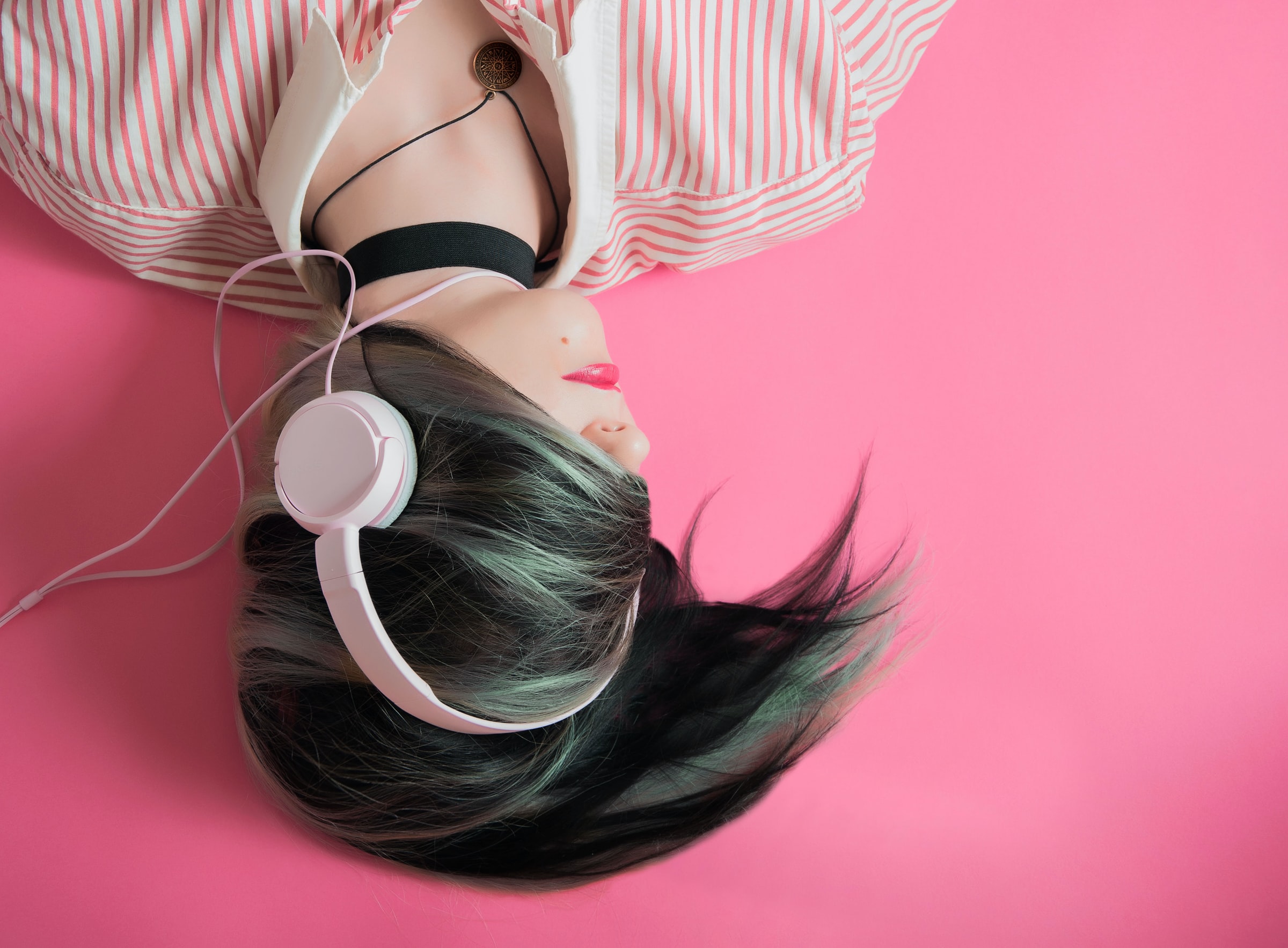Mixtape/Playlist by Anne E.
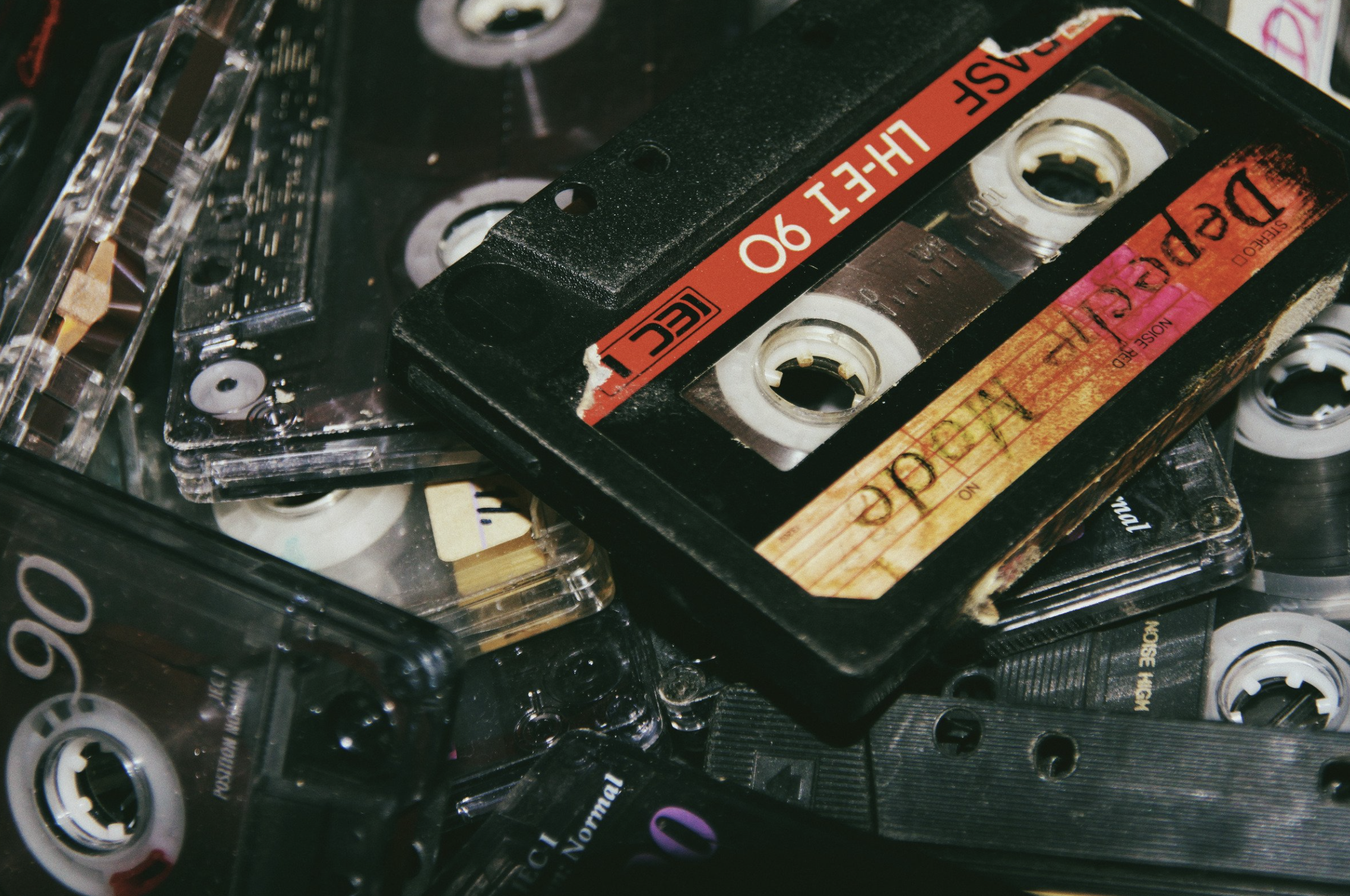
View Anne’s Original Task
View Anne’s Modebending Task
In her mixtape/playlist approach, Anne E. created a collection of songs and videos based on the mental associations she made between music and video and the contents of her bag. Each song includes an image from Spotify the artist’s album/song art and each video includes the embedded video link with static preview image. Both are accompanied by a brief explanation or quote from the piece being linked.
Production and Tools
Anne E. is a web designer, and her curation of songs and videos is neatly arranged in a visually appealing way on her blog. Although we both used audio, my audio is original content and hers is curated using hyperlinked visual images in the form of album/song art.
Literacies & Theories
Khan describes curation as the process in which a person “intrinsically links information to knowledge and meaning-making” and allows them to “add to a narrative around a topic” (Khan & Bhatt, 2019, p. 1).
In her own words, Anne explains how these playlists connect to who she is:
“Reflecting on this task, I would say the main affordances of this mode of communication are both experiential and cultural – you may not learn anything about the specific items I carry, how I use them, what my life is like, or what type of work I do, but you can learn something about where I sit culturally in our world from the songs I have chosen and how I like to connect emotionally with music.”
She also explains how it allowed her to demonstrate her own meaning-making:
I’ve been able to curate my own collection of information and link it together as I see fit, much how Bush (1945) envisioned with his Memex machine in 1945.
I connected immediately with the idea of curating a playlist and can remember the thrill of sitting by the boombox ready to record songs to make a mixtape in my youth. It’s something so many of us do in our non-academic lives yet translates immediately to several academic contexts. Many of us would not take the leap to use this format in our academic lives, but I’m glad Anne did.
References
Khan, S. & Bhatt, I. (2019). Curation. In R. Hobbs & P. Paul Mihailidis (Eds.), The International Encyclopedia of Media Literacy. (pp. 1-9). John Wiley & Sons, Inc. DOI: 10.1002/9781118978238.ieml0047
